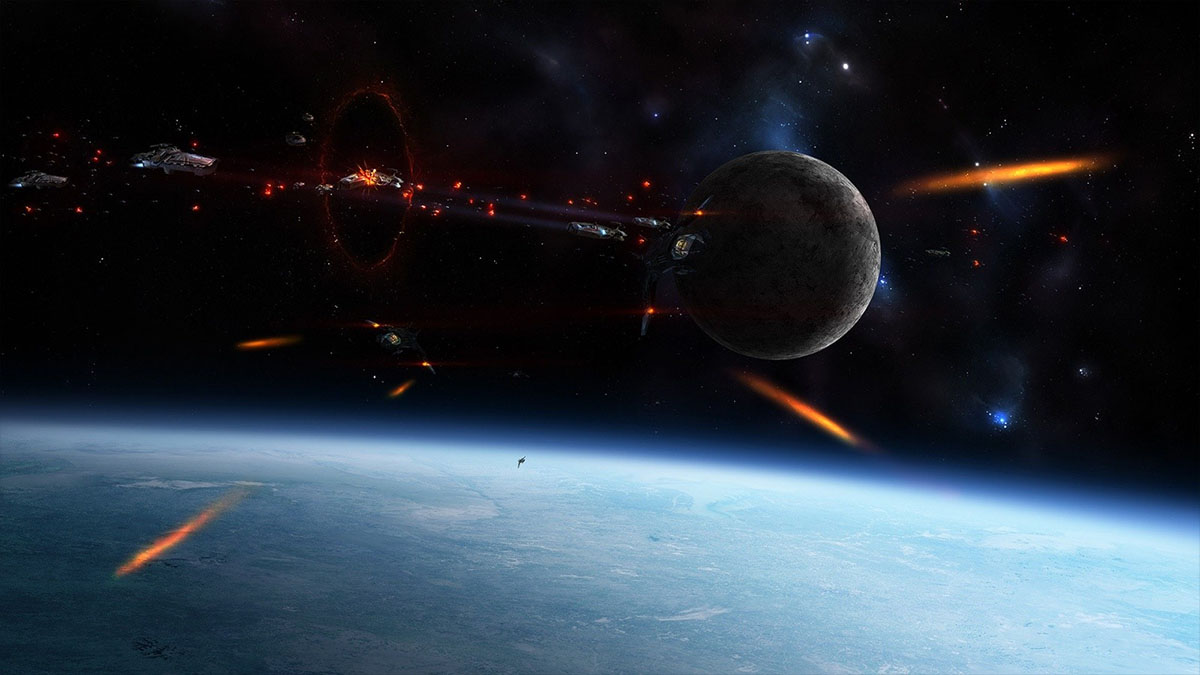the weapon no one can see coming…

When XKCD managed to outdo itself yet again with an article about what would happen if you tried to play a very simple game of baseball at relativistic velocities, I remembered an interesting weapon from sci-fi novels, a relativistic impactor. Basically, it’s the same thing as a kinetic kill vehicle, or KKV, a weapon which would be a necessity for any combat operation in deep space due to the laws of physics, but traveling at a terrifying 99% of the speed of light. Not only would a mere 100 kilogram metal slug level an entire metropolis, it would do it in an instant.
Fired from geosynchronous orbit, it would take less than 160 milliseconds to slam into the surface, faster than any alert about the incoming round can be received and understood by a human, even a very highly trained one. As soon as you know it’s coming, it already arrived, and as detailed by XKCD, it would actually trigger nuclear fusion as it compresses air molecules around it as it plows through the air. Add the output of that to its already immense kinetic energy and we’re talking about a genuine doomsday weapon, one that could strike at any time and kill tens of millions of people in an instant. Good thing that it’s not really a good option for any commander of a space armada and it couldn’t actually strike a planet even if it tried.
If you’ve read enough popular physics posts, you probably know what the first problem with relativistic KKVs is getting them up to speed. Going from zero to 663,910,830 miles per hour would take a lot of fuel. In fact, you’d need to burn through the equivalent of over 7.3 billion barrels of oil to make it happen, or if you’re a member of one extremely advanced species, the equivalent of 455 kilograms of antimatter. Now, this is not a completely insurmountable challenge if you’re ready to fire your RKV and wait for years until it gets to its target, just attach it to a mobile black hole reactor, or a slowly burning antimatter engine and let years of slow and steady acceleration do the job for you.
Considering that any war requiring you to fire off relativistic KKVs using space stations would drag for years on end due to the sheer distances involved in space travel and hence the amount of time it takes to actually get to the battlefield, this may even be a decent way to deal a blow to enemy forces before you arrive. Think of it as an interplanetary or even interstellar ICBM with a warhead that’s a solid piece of something heavy and dense. But how are you going to guide it? How will you make that the tiniest of rounding error in your calculations magnified by trillions of miles causes it to miss the target?
But this may actually be a secondary concern since there’s no way your RKV will even reach the target without some sort of anti-friction force field. True, the interstellar medium is sparse, but flying through it at 0.99c is no easy task and ordinarily insignificant impacts with a stray particle here or there come very quick and add up to some very significant friction that can push the relativistic KKV off course. When it actually approaches a target in a solar system, friction with the much denser planetary medium would vaporize anything traveling over 0.1c so your KKV would be sandblasted away in an instant. It would be like firing a bullet only to watch it vanish into thin air with a bright flash, never hitting your opponent.
If you’re perched somewhere in the Oort Cloud and set your sights on Earth, the relativistic round would vaporize around on the outer reaches of the Kupier Belt. You would need to open a wormhole between the space-time coordinate when your RKV would reach its intended velocity and the atmosphere of your target planet, but the physics of that are daunting, and the energy such a feat would require is more than enough to destroy a small solar system, making the payoff seem dinky by comparison. After all, if you can destroy a solar system in one blast, why even bother with an RKV?
All that said, however, there is a loophole. If instead of taking the relativistic impactor literally, we just say that any kinetic vehicle traveling at a distinguishable percentage of the speed of light fits the bill. This way, we can launch a much more controllable, manageable, and slower KKV at say, 0.05c. It will still be devastating when smashing into a target, generating over 2.1 gigatons of energy, but how relativistic it is will be open to debate, since even at 0.05c it can still be fairly accurately described using Newtonian laws of motion and the standard formula for calculating kinetic energy rather than the equations modified with a Lorenz factor to capture its relativistic properties.
Regardless, since it would be moving at 32.4 million miles per hour and arrive within 8 seconds or so after being fired from Earth’s geosynchronous orbit, it would still retain some element of surprise. Having a window of just 8 seconds from detection to impact doesn’t leave much time to do anything to counter it and by the time a laser intended to hit this pseudo-RKV can even be aimed, the target would be long-gone. Even if a special anti-RKV laser just so happened to be right in the middle of the target zone, aiming right at the kinetic round coming down from above, and was perfectly linked with a detector so it could fire in 300 milliseconds of detection, by the time the beam is intense enough to have a measurable effect on the KKV, it’s far too close to the target to be stopped. And when you have something this effective, do you really need a true RKV?





